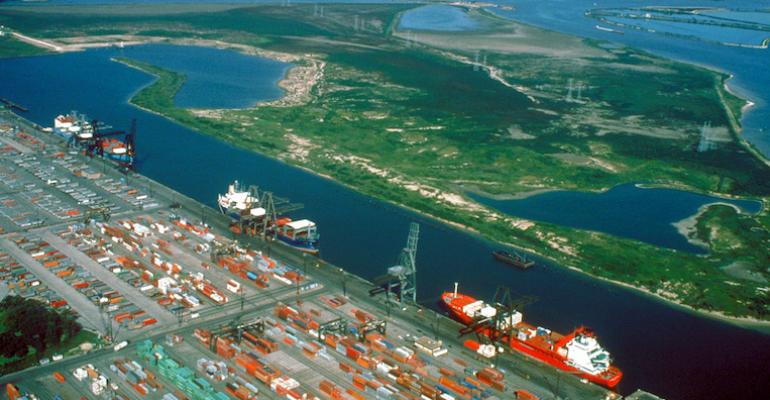A very visible indicator, the green vessel icons - signifying cargo carrying vessels - at anchorages around US ports, on MarineTraffic and other ship tracking websites, are in the case of a few East Coast ports, less concentrated.
On the West Coast, congestion levels have crept up slightly- after major reductions of late 2022. A central question facing the liner sector, along with dry bulk, and tankers, as well, though to a lesser extent, concerns China; what will happen as activity resumes after the pause as Lunar New Year is celebrated? For shipping lines serving the US, uncertainty about a possible recession is also clouding the carriers’ economic radar.
Windward AI, whose offerings include data on bottlenecks at ports, said, in an early January Port Insights report, that: “Savannah, Ga decreased its average vessel turnaround time by 24%, tying neighboring Charleston, SC for second place in the region. Savannah did better with feeder vessels than Charleston, while Charleston was faster than Savannah on ultra-large vessels.” In the US Gulf, they noted that: “The port of Houston continues to have a great run of double-digit congestion decreases.”
Turning to the US west coast, they commented that: “The picture is not as bright in Los Angeles (LA) and Long Beach (LB), where transit times increased by 41.7% and 24.5%, respectively, in December compared to November. That sets LAX back to a congestion level similar to last April, and LB to last June's levels. Oakland improved its average transit times by 26.4%. Vessels arriving from China and other parts of Asia were quicker to berth in Oakland than they were in LA/LB.”
Another commentary comes from Xeneta, with its vast database of cargo movements in the liner sector, came in a recent podcast broadcast on the US mainstream media outlet National Public Radio (NPR). Emily Stausboll an analyst at Xeneta, noted the sharp contrast with the 2021- 2022 situation, saying, “Shippers have gone from being unable to get their carriers on the end of the phone and say, hey, I need to talk to you, to suddenly all the carriers are calling them and saying, hey, do you have any containers for me that I can move?”
Speaking about the wave of vessel ordering that began in late 2020, and went full steam ahead in 2021, she said: “So they're coming now, and they're coming next year. And that's just totally going to ruin those market fundamentals and really make it hard for carriers to earn money.”
Listen to an episode of the Seatrade Maritime Podcast on the outlook for container shipping in 2023
Xeneta, in its own podcast, a few days earlier, offered detail on the rate environments in the major trades. The firm’s head analyst, Peter Sand, talked about an easing of rates into the US East Coast so far in 2023, which is consistent with the reduced buildup of vessels at anchorages. He described a situation where the inbound East Coast run had been attractive, for daily vessel earnings, in the second half of 2022, which had pulled vessels from the transpacific trades into the Atlantic.
Sand said, in a Xeneta release “We are all aware of the macroeconomic forces impacting global consumer demand and international freight volumes,” and added that, “the easing congestion at ports, is pushing rates down across the board as carriers suddenly compete for business which, this time last year, was flooding through their doors.” Nevertheless, in Xeneta’s estimation, the trans-Atlantic spot rate, now below $6,500 per forty footer, with the contract rate now below $6,000, is still on the order of three times the rate at the beginning of 2021.
Copyright © 2024. All rights reserved. Seatrade, a trading name of Informa Markets (UK) Limited.
Add Seatrade Maritime News to your Google News feed.  |

